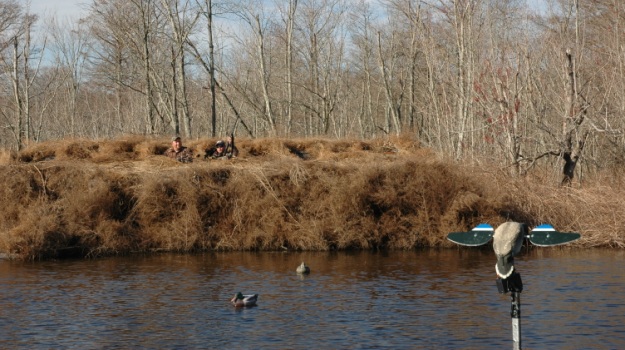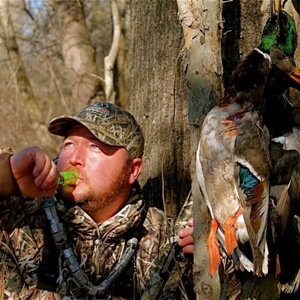
While walking in a nearby park, I’ve noticed increasing numbers of waterfowl on its small ponds. Realizing that there’s a good number of mallards and resident geese that rarely, if ever, participate in the summer or winter migrations. I also have seen some new birds like teal, an occasional black duck and other puddle ducks landing on the park ponds at first light. So, as some cooler weather settles in during mid to late November, many waterfowlers like Mossy Oak Pro of the last 11 years, Richie McKnight, of Dawson Springs, Kentucky, are getting geared up for the upcoming waterfowl season.
 Since early October my duck-hunting buddies and I have been gathering a crop of oak limbs. We’ll continue to gather them until the leaves begin to turn brown. One of the most-critical ingredients to a successful waterfowl hunt is not your decoy spread, your calling ability or your shooting ability, although all three of these do play a role. But if ducks see you in the blind, then the decoy spread, your masterful calling and your ability to shoot accurately will do you no good. That’s why we start well before duck season to gather oak limbs, while the leaves on the branches are still green. I hunt out of a boat blind, blinds in the woods when hunting flooded timber and a pit in a cornfield.
Since early October my duck-hunting buddies and I have been gathering a crop of oak limbs. We’ll continue to gather them until the leaves begin to turn brown. One of the most-critical ingredients to a successful waterfowl hunt is not your decoy spread, your calling ability or your shooting ability, although all three of these do play a role. But if ducks see you in the blind, then the decoy spread, your masterful calling and your ability to shoot accurately will do you no good. That’s why we start well before duck season to gather oak limbs, while the leaves on the branches are still green. I hunt out of a boat blind, blinds in the woods when hunting flooded timber and a pit in a cornfield.
Before the farmers cut the corn, we go in, pull the ears of corn off the stalks, give them to the farmers and cut corn stalks and bundle them up to have corn stalks to brush up our pit blind. Where I live, soybeans, corn and tobacco are the main crops farmed. In the process of curing the tobacco, the farmers use what’s known as tobacco sticks to keep the stalks of tobacco standing up straight. We use tobacco sticks to bundle our corn stalks with before wrapping baling twine around the corn stalks. Those tobacco sticks help prevent the corn stalks from bending or breaking in their middles. In one of the bins in our pole barn, we stack our corn stalks rolled up with tobacco sticks and baling twine.
If a person hunts waterfowl very often, he or she should be aware that wind, water, snow, sleet, hail and hunter movement in a pit or a blind destroys an awful lot of cornstalks and oak brush during an entire waterfowl season. So, by cutting corn stalks and oak brush and storing it in a dry, protected barn, we always have an easy, handy supply of brush for our blinds all season long.




























